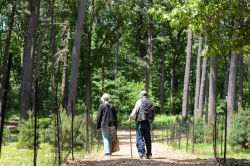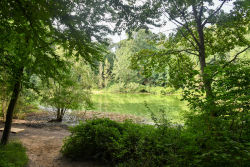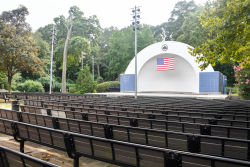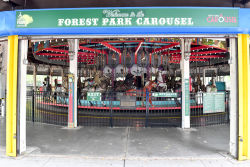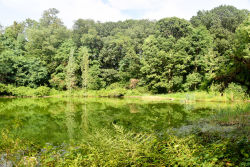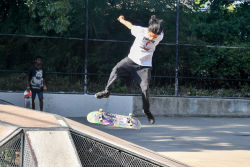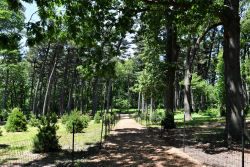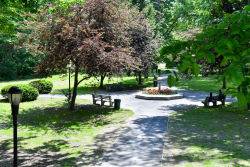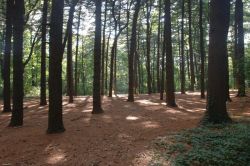Forest Park
Wallenberg Square
This square honors Raoul Gustav Wallenberg (1912-1947), the heroic rescuer of numerous Hungarian Jews from the Nazi policies of persecution and extermination during World War II (1939-1945).
Though his father, a Swedish naval officer, died shortly before Wallenberg’s birth, Raoul Wallenberg was raised in one of Sweden’s most prominent families. His grandfather, Gustav Wallenberg, a Swedish ambassador to Japan, along with his mother and grandmother fed his mind, helped him study and travel abroad, and raised him to adulthood. Fluent in English, French, German, and Russian, Wallenberg put his education and status to extraordinary use in the plight and disappearance of Hungarian Jews in 1939. Backed by the Swedish government, and at the request of the American War Refugee Board, Wallenberg became a friend and savior to hundreds of thousands of Jews living in Nazi-occupied Budapest.
In June 1944, the War Refugee Board appointed Wallenberg as First Secretary at the Swedish Delegation in Budapest. Using drafting skills acquired at the University of Michigan, he designed counterfeit Swedish passports, which he distributed on trains bound for concentration camps. He purchased as many houses, villas, and buildings as possible and adorned them with the blue and yellow colors of Sweden’s flag, transforming the properties into neutral diplomatic sites and safe havens for Jews. Wallenberg also organized and set up warehouses stocked with food to be distributed both as rations to the needy and bribes for Nazi officers. It has been estimated that of the 120,000 Hungarian Jews who survived the Nazi extermination, at least 100,000 were saved by Wallenberg’s efforts.
On January 17, 1945, Wallenberg left Hungary to discuss relief plans with nearby Soviet commanders, but was soon reported missing. The Soviet government claimed to have no knowledge of his whereabouts until 1957, when it released documents claiming Wallenberg died in 1947, in a Russian prison, from a heart attack. Although the circumstances of his death remain unclear, it is widely believed that he was executed by the KGB.
Wallenberg Square lies within Forest Park, on the corner of Metropolitan Avenue and Park Lane South, in the borough of Queens. In addition to this square, the Raoul Wallenberg Momument and Walk were also named in his memory. Located at 1st Avenue and 47th Street in Manhattan, the monument was dedicated on November 9, 1998 in a ceremony attended by international luminaries, including Princess Victoria of Sweden. Commissioned by the Swedish consulate, Swedish sculptor Gustav Kraitz designed the monument. Kraitz’s piece, titled Hope, consists of a bronze replica of Wallenberg’s briefcase, five pillars of black granite, and a blue sphere standing on a foundation of cobblestones that paved the streets of the devastated Jewish ghetto in Budapest, which were donated by that city. The sculpture symbolizes Wallenberg’s courageous and inspirational achievements, and reminds us that, in the words of Elie Wiesel, the Nobel Peace Prize Laureate who also attended the dedication of the monument, “humanity is always possible, even in the face of inhumanity.”
In addition to this square in Forest Park and the monument in Manhattan, Wallenberg’s legacy is remembered by three other Parks properties including Wallenberg Forest in the Bronx and Raoul Wallenberg Playground in Manhattan’s Highbridge Park.
Check out your park's Vital Signs
Clean & Safe
Green & Resilient
Empowered & Engaged Users
Share your feedback or learn more about how this park is part of a
Vital Park System

Know Before You Go

Links
Contacts
Forest Park Administrator: (718) 235-0815
Forest Park Golf Course: (718) 296-0999


